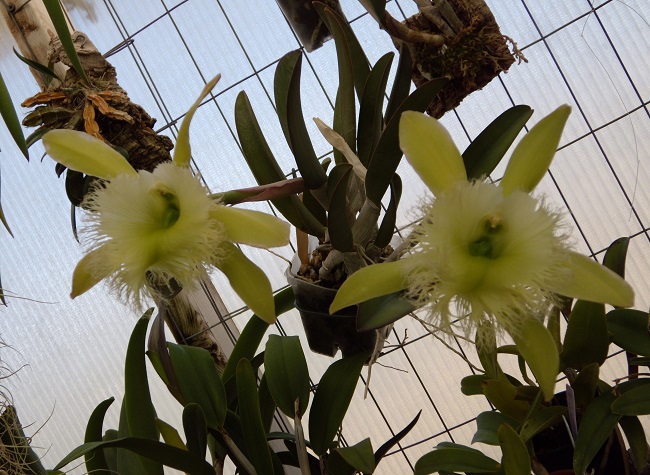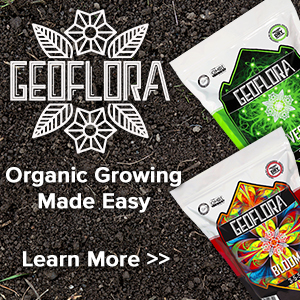
The Vanilla planifolia orchid (and its other 50 cousins) is a rather expensive (second only to Crocus Sativa or the Saffron Crocus) commodity. In this article I would like to expand on the plants culture and pollination to produce the Vanilla pod.
The Vanilla, native to the tropics, especially Brazil, tropical Africa and the West Indies is a strong climbing vine often reaching some 15 feet or more. Unless the plant is at least 5 years or older and has reached a considerable length, it will be hesitant to bloom. Once it does however, a single cluster of buds will open in succession to reveal the Vanilla flowers which are very short lived, often no longer than a day (think of a daylily). To make matters even a bit more complicated, in nature the plant relies on a very specific pollinator, the Euglossine bee (also called Orchid Bees) consistent with the pollination of many very fragrant orchids in the neotropics.
Unfortunately, this little bee is nonexistent in the Continental US and no other insect can do the same job. Consequently, manual labor is required to duplicate the efforts of the small bee to successfully effect pollination. Each cluster of 10-15 buds can produce a pod each and will open in succession over a month’s time. Do not pollinate too many flowers per vine, as this will soon deplete a mature vine to the point of death. Without some very intricate maneuvering with respect to the column and stigma, effective pollination won’t occur, but once successful, in approximately 6 weeks the pod will have attained its maximum length, yet another 6 months is required for complete maturity.
Capsules must be harvested soon after they turn from green to yellow, but before the seed capsule splits open to disperse the seed. Once mature the pods must then be cured, fermented then processed to produce the very familiar, fragrant, and desirable Vanilla a much more complicated process than I mention here. In a nutshell, the entire process from pollination to “Vanilla” can take easily take up to a year.
Now the Concept of Mass Production
It is certainly conceivable to amass a quantity of plants, allow them to mature and grow to flowering size (remember age and vine size are an important factor) and manually pollinate each flower in succession. Vanilla planifolia is available from some retail and wholesale growers throughout the US either as large vines or as small “cuttings” (I purchased mine a few years ago on eBay for $7.50). Nurseries in both Florida and Puerto Rico will sell 12-18” vines for about $20 or cuttings from about $3.50. One word of caution: Do not purchase wild collected plants, particularly since the Vanilla population native to parts of Mexico are nearly extinct.
Ideal growing conditions for this plant are basic, but once brought into the greenhouse, give the plant ample room to grow and something to grow upon. In nature, you’ll find these plants growing up and down the trunks of trees in somewhat of a zig zag pattern, although the plants can and will grow and bloom on a horizontal surface as well. Vanilla has the quirky behavior to bloom at places on the plant where a “bend” might occur. One might consider limbs of oak (or a similar suitable hardwood) the object is to provide a surface for the roots to cling to. Keep the growing environment warm, ideal daytime temperature of 85 degrees and a minimum 60 degrees year-round and provide bright light, 85-90% humidity, ample air circulation, fresh water and fertilizer. When ready to bloom, be vigilant. To produce the pod, the flowers must be pollinated within a strict timeframe, the same day the flower opens.
This is a daunting but respectable endeavor to be sure. To my knowledge, there is no commercial production greenhouse in the US producing the Vanilla pod, but the prospect is intriguing. Some Hawaiian growers on a very small scale do produce small quantities of “beans” and eventually Vanilla, with success as “boutique” producers.
All things considered with the cost of production, time and labor, it is no wonder that a single cured quality Vanilla pod can fetch upwards of $8-$10 and a high-quality Vanilla Extract even more.
I (as a die-hard Orchid collector) admire Vanilla Planifolia for the Orchid it is, but quite frankly, I’ll spend the few extra bucks to buy the whole pod (or the extract) and leave the rest to Mother Nature or to those who have the fortitude to attempt such an endeavor! Tom Capranica has been a hobby collector and hybridizer of Orchids for over 20 years, and an active member of the American Orchid Society (AOS) for about the same length of time. He grows his Orchids in a 450 sq. ft. climate-controlled greenhouse, containing over 300 plants of various genera, primarily Cattleya.
Related Articles & Free Email Newsletter
Cymbidiums, The Orchid That Made the Corsage Famous
How to Divide and Conquer Your Orchids
How to Water and Feed Orchids During the Summer and Fall Months




Comment here